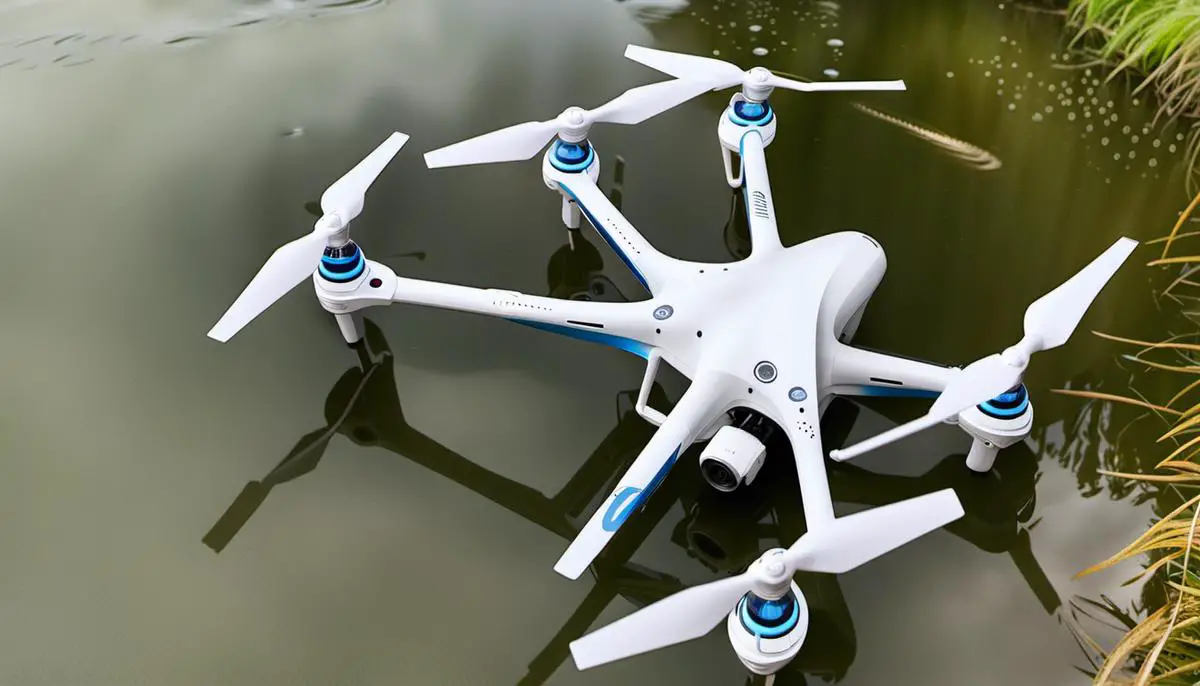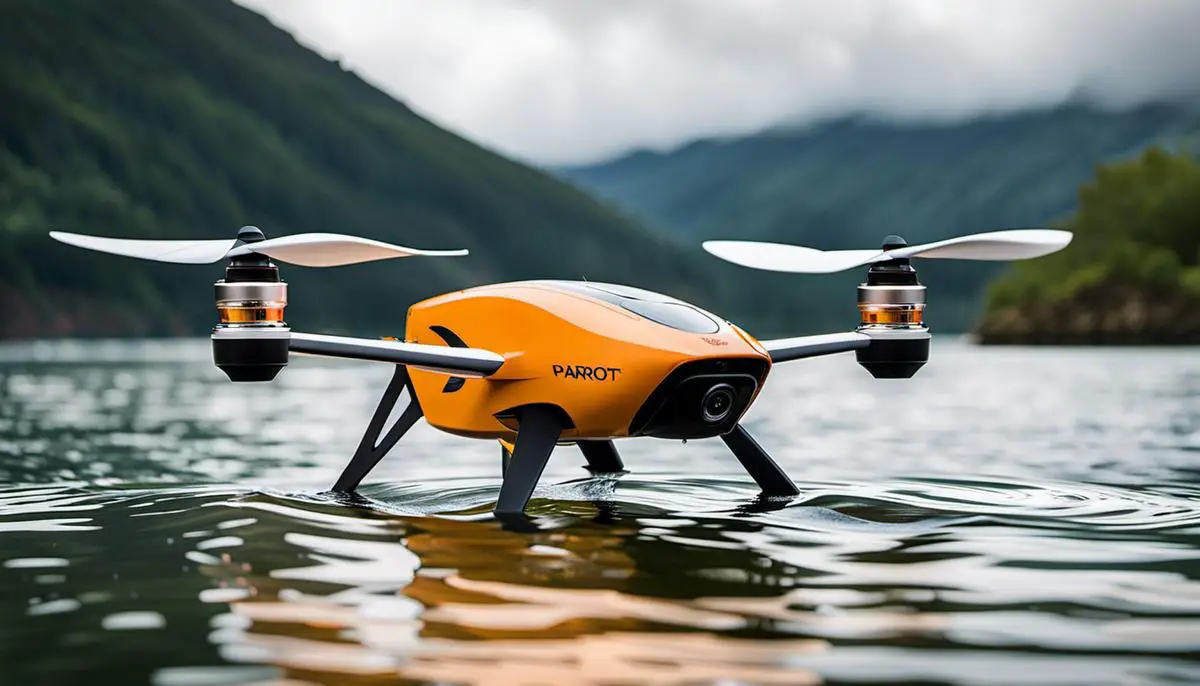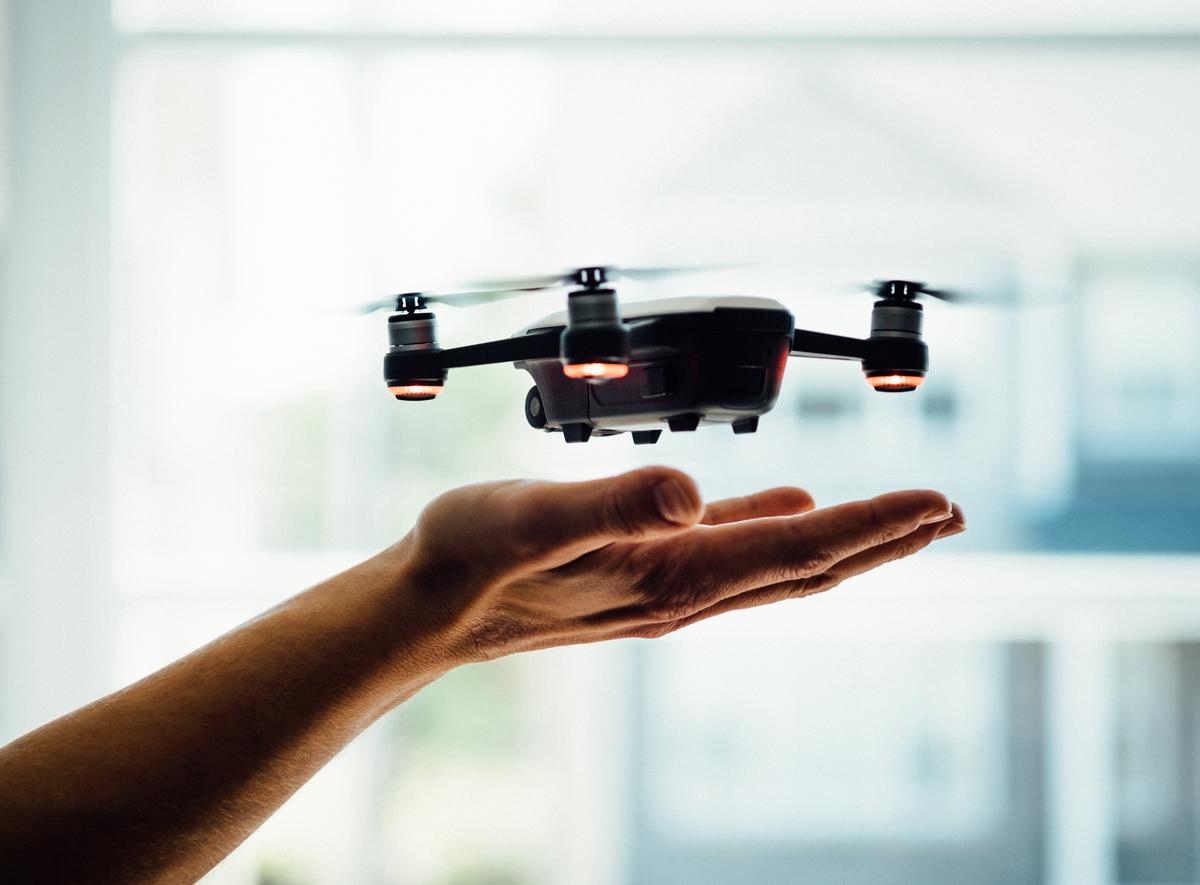Are Drones Waterproof? 10 Tricks to Keep Them Dry!

Are Drones Waterproof? Exploring the Capabilities and Limitations of Waterproof Drones: Discover the truth about drone waterproofing and learn about the options available for flying in wet conditions.
In the world of advanced technology and increased versatility in the use of drones, there is a growing need to understand various types of drones, including those that are waterproof or water-resistant. This topic holds significance as different conditions of operation call for different requirements from a drone’s performance capability. While drones have taken over a wide spectrum of environments, it is now critical to delve into their ability to handle water exposure. This discourse provides an insight into the nuanced difference between waterproof and water-resistant drones, explores some of the best waterproof drones currently available in the market, and offers information on their maintenance, safe handling, and precautions to efficiently avoid water damage.
Waterproof vs. Water-Resistant Drones
Understanding Waterproof and Water-Resistant Drones
When it comes to drones being able to withstand water exposure, there are two types to consider: waterproof and water-resistant. A waterproof drone is designed to be completely impervious to water, meaning it can be submerged without any detrimental effects to its function or safety. This is often achieved through specialty materials and sealing techniques used in the construction of the drone.
On the other hand, a water-resistant drone is only able to resist a certain degree of water exposure. This could mean it’s capable of dealing with light rain or minor splashes, but not full submersion. Water resistance is typically granted through design elements that prevent water from easily accessing the drone’s internal electronic components, yet it doesn’t provide the same comprehensive protection as waterproofing.
Understanding IP Ratings for Assessing Water Protection
When we talk about waterproofing and water resistance in devices like drones, the term ingress Protection (IP) rating comes to the forefront. This scale provides crucial information about a device’s ability to withstand exposure to solids like dust and, more importantly for our topic, water. The IP rating is defined by two numbers, where the first signifies the protection level against solids and the second the protection against liquids. For instance, a drone with an IP68 rating is totally dust-tight and can be dipped in water beyond a depth of one meter. It’s important to note, though, that not every drone comes with an IP rating. Therefore, should a drone’s capabilities of being water-resistant or waterproof be important to your needs, it’s advisable to verify this before buying.
Top Waterproof Drones in the Market
Feature Spotlight: The Affordable and Versatile Parrot Hydrofoil Waterproof MiniDrone
For those in search of budget-friendly yet durable and waterproof drones, the Parrot Hydrofoil is a standout option. This versatile piece of technology is designed to comfortably handle both air and water environments, thanks to its robust build. A unique selling point of this drone is its detachable mini-drone, which fits onto a hydrofoil base, enabling the drone to smoothly sail across water surfaces. In addition to this, the Parrot Hydrofoil comes equipped with a 480×640 VGA camera and boasts an impressive cruising speed of 6.2 mph on water. Given its affordability and robust features, the Parrot Hydrofoil is a common choice for those looking to explore the world of waterproof drones.
SwellPro SplashDrone 3+
If you’re looking for a more professional grade waterproof drone, the SwellPro SplashDrone 3+ is worth considering. This high-tech drone is designed to land and float on water, capturing high-quality 4K video and 14MP photos even under the harshest weather conditions. It boasts a load-release mechanism for fishing, a three-axis gimbal, a live video feed range of 1km, and an impressive flight time of up to 25 minutes. This drone is not only waterproof but also corrosion-resistant, making it perfect for marine environments. The SwellPro SplashDrone 3+, albeit a bit pricier, is a fantastic investment for professionals and enthusiastic hobbyists alike.
Introducing the PowerVision PowerEgg X Wizard
To wrap things up, let’s consider the PowerVision PowerEgg X Wizard, a drone that uniquely combines the functionality of an AI camera and a water-landing aerial vehicle. Its versatility arises from its switchable water landing floats and waterproof shell. The drone integrates innovative features like smart facial recognition, deep learning algorithms, and synced voices. On a single charge, the PowerEgg X Wizard can stay airborne for 30 minutes and reach peak speeds of 65 km/h. A 4K/60fps UHD camera enables it to capture high-resolution images and videos. While it does come with a higher price tag, its impressive and distinct features justify its cost.

Maintenance and Safety Precautions for Waterproof Drones
Essential Maintenance Tips for Waterproof Drones
As impressive as waterproof drones might sound, they demand a strict maintenance schedule to guarantee their maximum life span and performance. Regular check-ups, particularly after each flight, are vital. It’s essential to remove any sediment or remnants of water, as they can corrode the drone’s components over time, even if designed to withstand water exposure. Always ensure that the drone is completely dry before putting it away, as the presence of water could drastically decrease its service life.
Safety Precautions in Handling Waterproof Drones
Handling waterproof drones also comes with certain safety precautions. The foremost precaution is to never assume that your drone is entirely waterproof. Even in drones built to withstand submersion in water, not all of their parts are completely waterproof. The drone’s motors, for instance, may be water-resistant but not waterproof. Always ensure your device’s rating for water resistance, and never push it beyond its limits. For drones that can land on water, it’s crucial to approach landings cautiously to avoid flipping, which could submerge a non-waterproof part, causing unwanted damage. Always remember, even a waterproof drone is not immune to water damage if not properly cared for.

Whether you are a drone enthusiast, a professional photographer, or an industrial operator, distinguishing between water-resistant and waterproof drones and selecting the most suitable drone as per your needs, goals, and environments is pivotal. Remember, not all drones hold up well in wet conditions. Besides, learning about the top-tier waterproof drones on the market can provide a greater understanding of features and price ranges. Finally, irrespective of the drone’s capabilities, users must uphold cautious maintenance and handling habits to sustain the longevity of their device. As a rapidly evolving industry, drone technology will continue to surprise us in the future, and staying informed will help you harness the full potential of these incredible machines.
Are Drones Waterproof? : FAQs
Q: Are drones waterproof? A: Some drones are waterproof, but not all drones have this feature. Waterproof drones are specifically designed to withstand water exposure and can operate in rainy or wet conditions.
Q: Can waterproof drones fly in heavy rain? A: Waterproof drones are designed to withstand light rain or drizzle, but they may not be suitable for flying in heavy rain or downpours. It’s important to check the specifications and guidelines provided by the drone manufacturer regarding the drone’s water resistance capabilities.
Q: Are all parts of a waterproof drone waterproof? A: While waterproof drones are designed to be water-resistant, not all parts of the drone may be fully waterproof. Typically, the main body and critical components, such as the motors, electronics, and battery compartments, are designed to be waterproof, but other parts like the camera or gimbal may have separate water-resistant features.
Q: How deep can waterproof drones be submerged in water? A: The depth to which a waterproof drone can be submerged in water varies depending on the specific model. Some waterproof drones can withstand submersion up to a few meters, while others may only be able to handle shallow water or brief immersions. Always refer to the manufacturer’s guidelines for the drone’s water resistance limitations.
Q: Can waterproof drones float on water? A: Some waterproof drones are designed to float on water, providing an additional layer of protection and making them easier to retrieve if they land or crash in water. However, not all waterproof drones have built-in flotation systems, so it’s important to check the specifications.
Q: Are waterproof drones suitable for underwater use? A: Waterproof drones are primarily designed for use in wet or rainy conditions and are not typically suitable for underwater use. They are built to resist water exposure on the surface and are not designed to operate fully submerged.
Q: Can I fly a waterproof drone in saltwater environments? A: While some waterproof drones may have corrosion-resistant components, it’s generally recommended to avoid flying drones in saltwater environments. Saltwater can be highly corrosive and may damage the drone’s components over time, even if they have some level of water resistance.
Q: Can I clean a waterproof drone with water? A: Waterproof drones are designed to be resistant to water exposure, which means you can clean them with water. However, it’s important to follow the manufacturer’s guidelines and use appropriate cleaning methods to ensure the drone remains in optimal condition.
Q: Can I land a waterproof drone on water? A: Some waterproof drones are designed to land on water and even take off from the surface. These drones often have specific landing gear or flotation systems to facilitate water landings. However, it’s important to exercise caution and ensure a safe landing to prevent damage to the drone or its components.
Q: Are waterproof drones more expensive than regular drones? A: Waterproof drones generally tend to be more expensive than regular drones due to the additional engineering and design required to make them water-resistant. The cost may vary depending on the specific features, capabilities, and brand of the drone.
When considering a waterproof drone, it’s important to evaluate your specific needs for water resistance, check the drone’s specifications and capabilities, and review user feedback and reviews to ensure you choose a reliable and suitable waterproof drone for your intended use.








